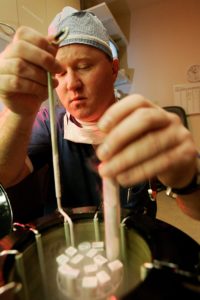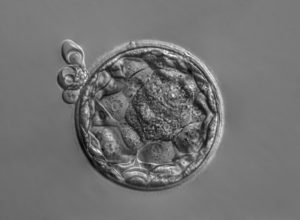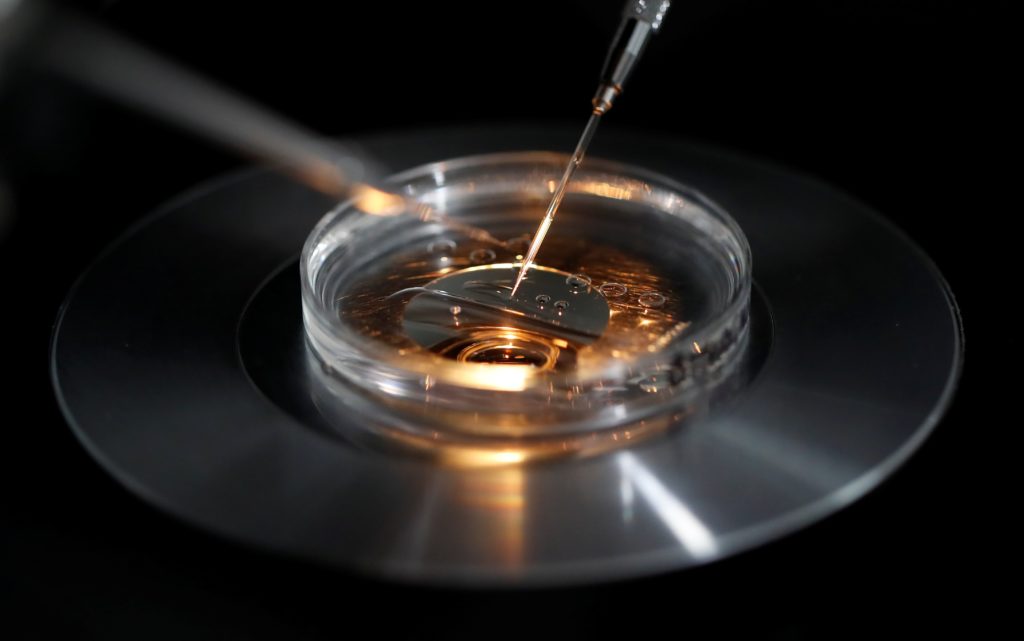The panic that ensued in the news media after a court in Alabama recognized embryos as persons centered on the ruling’s threat to a practice that is widely seen as a modern technological miracle: in vitro fertilization (IVF). As a result, state lawmakers moved quickly to pass legislation granting immunity to patients and clinics associated with the practice.
Why are clinics concerned that deeming embryos “persons” will harm their businesses?
Because the Feb. 16 decision reveals an uncomfortable truth about the process: that the experimenting on and discarding of human embryonic lives is a necessary part of IVF. As a result of this commodification of embryonic persons, only 7% of all lab-created children are born alive.
The ugly truth behind IVF is not easy to digest. For many couples struggling with infertility, the procedure offers a convenient — albeit expensive — answer to their suffering, and is widely seen as a moral good.
But the moral problems with IVF run deeper than many of us would like to admit.
The Catechism of the Catholic Church exposes its most basic flaw: that in separating the sexual act from its procreative dimension, procedures like IVF entrust “the life and identity of the embryo into the power of doctors and biologists and establishes the domination of technology over the origin and destiny of the human person” (CCC 2377).
The Church’s teaching on assisted reproduction is based not on weary, outmoded legalism, but rather on an essential moral truth. As the Vatican’s 2008 bioethics document Dignitas Personae (“The Dignity of the Person”) states: “Behind every ‘no’ in the difficult task of discerning between good and evil, there shines a great ‘yes’ to the recognition of the dignity and inalienable value of every single and unique human being called into existence.”

How does IVF work?
IVF begins with injecting follicle stimulating hormones into a woman’s ovaries in order to hyperstimulate them and produce several eggs at once rather than the one egg that is naturally released to the fallopian tubes each month. These injections can cause severe side effects, one of which is ovarian hyperstimulation syndrome, which can cause pulmonary issues, stroke, blood clots, kidney dysfunction, loss of fertility, premature menopause, and even death.
The extracted eggs are fertilized in a petri dish by injecting one sperm into the egg through a needle, or by allowing sperm and eggs to mix “naturally” in the dish. These babies are made in glass, or in vitro, rather than in the mysterious secret sanctuary of their mothers’ wombs.
IVF often involves the preimplantation screening of blastocysts (early embryos), to not only determine the likelihood of implantation success, but also to screen for chromosomal abnormalities, such as Down syndrome, and inherited genetic anomalies, such as cystic fibrosis and spinal muscular atrophy. After these blastocysts are screened, only the ones determined “genetically healthy and normal” are transferred — with merely the hope of implantation. This eugenic practice opens the door to the elimination of “defective” children.
Researchers have found, however, that embryos with abnormal cells have the ability to self-correct, or push the abnormal cells out and replace them with normal cells. Eliminating these early embryos, of course, destroys a vast number of developing human beings that might have later been designated as “good quality.”
Untransferred embryos are then frozen, destroyed, or donated, and ultimately destroyed through scientific research. If it’s decided for any reason that too many embryos have implanted, the babies are deemed to be of the undesired sex, or they are not developing as the parents desire, often abortions are performed until only the desired number and quality remain (a common clause in surrogacy contracts, for example).
The human toll of low ‘success’ rates
IVF intentionally plays a reproductive gaming wheel of chance, bringing human life into existence with the knowledge that not all of the lives will make it — if any.
Consider this: if 20 embryos are created through IVF, six will be discarded outright for not passing preimplantation screenings, eight won’t survive the transfer process, and five will be discarded or frozen. And all 20 will have been dehumanized and considered expendable from the first moment of the IVF process.
It’s difficult to imagine a scenario where a parent would willingly sacrifice one of their children to save another one, and yet, this is what occurs through the experimentation of the IVF process. The sacrificing of children is so readily agreed upon by IVF pursuers because many view blastocysts as mere “clumps of cells” as opposed to the unique, unrepeatable persons that they are. But the Catholic Church teaches otherwise: “Human life must be respected and protected absolutely from the moment of conception,” the Catechism states.
If you add up the numbers of embryos who are disposed of, do not survive the thawing process, or are donated to research, IVF eliminates millions of human beings. In 2012, it was found that since 1991, 3.5 million embryos had been created and that only 235,480 had been successfully implanted, 1.7 million having been discarded, with 23,480 being destroyed after their removal from storage.
It doesn’t end there. After the first IVF cycle, less than 30% of women have a live birth, and there’s a paltry 45% success rate after three full cycles of IVF. Two-thirds of patients will be successful only after six or more cycles. How many little lives are being lost through this extensive trial and error transfer process?

Abandoned responsibility
Rather than generously create new life, the IVF process asks that children involuntarily be sacrificed to death for the desires of those who should be their greatest protectors: their parents.
IVF depends on exploitation and possession to fulfill adult satisfaction: in the initial genetic screenings; in the trial-and-error process of determining which transferred embryos will implant; in the destruction and disposal of embryos through scientific research; and by the indefinite cryopreservation that is already the fate of more than a million embryonic persons.
From a Christian perspective, destroying innocent human life — and calling it “good” — doesn’t let us become who we are meant to be in God’s eyes.
From the standpoint of basic morality, the truth about IVF is even clearer: it’s all part of an ever-expanding, money-hungry, child-commodifying multibillion dollar fertility industry that profits off of the creation and destruction of embryonic human beings — and one that continues to get a free pass from politicians, mass media, and often, well-intentioned but ill-informed citizens.

